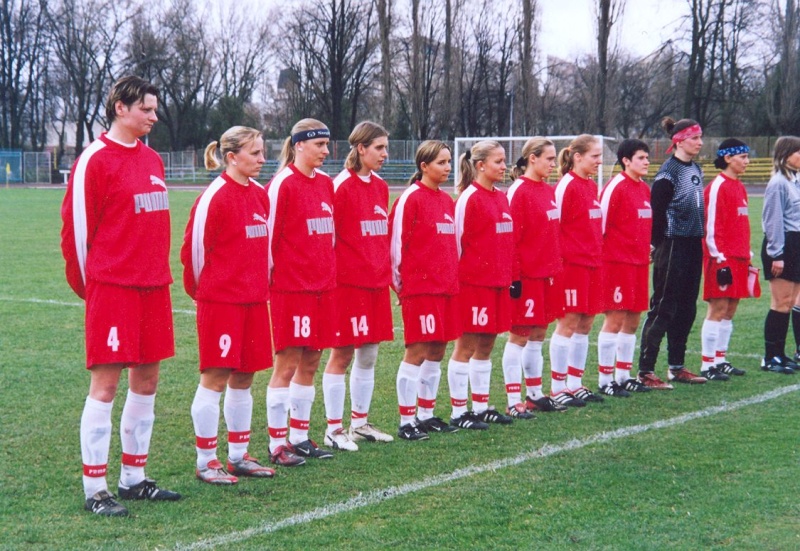The history of women's football in Poland can be linked to the challenges associated with women's path to political and social empowerment, which began as an arduous struggle against patriarchal beliefs. However, this is not a Polish-specific issue. The first Women's World Cup was held only in 1991, when men's football had already had fourteen World Cups by that time.
In 1921, the Unia Sports Club in Poznań became the first club to form a women's football section, and the press reported on the details of the pioneering match with their rivals from Gdańsk. A year later, another club was established at Zorza Sports Club in Poznań, as a result of the emergence of more enthusiastic female players.
At the same time, the men's team debuted on the international stage in 1921, playing their first official international match in Budapest against Hungary, where they suffered a 1-0 defeat. Poland's women had to wait 60 years for their international debut, playing against Italy in 1981.
As previously stated, the early days of women's football were characterised by a challenging fight against prevailing patriarchal attitudes. In the pre-war Polish press, women's football was primarily a curiosity, with women's teams appearing in the world being reported as exotic news. Additionally, there were various opinions and theories that football was harmful to the female body and that the sight of a woman playing football had nothing to do with beauty. (Even though beauty is not the only privilege of women.)
The most significant obstacle to the growth of women's football between the two world wars was the relatively low popularity of the sport among women and the lack of competitors. To say that its beginnings were an uphill battle would be an understatement. Following the Second World War, in 1947, women's matches were also sensationalised, with the players having beautiful long legs and impeccably tailored clothes. However, the game was better left untold. Some observers described it as a circus. In an attempt to discredit women's football, the Polish press also used pseudo-scientific arguments to claim that the female body is biologically unfit for sport. Psychology was also invoked, with the dichotomy between the invincible, steely man and the fragile, delicate and weak woman being referenced.
The late 1950s saw a boom in the popularity of women's football, with the formation of new clubs and an increase in the number of rivals for women's teams. In 1975, an unofficial women's league was launched, but there was still no structured league in which players could officially compete for the Polish women's champion title.
"Madam! Would you like to play football?" was the title of a very special advertisement in the weekly magazine Wiadomości Zagłębia in 1974. It quoted an anonymous letter to the editor in which a teenage female reader pointed out that football, like other activities, was not necessarily a male preserve. The next issue of the weekly published the names of fourteen women who had answered the call to play, and two weeks later seventy-five names were published. In the end, almost a hundred players signed up, and the editors admitted that the response came as a surprise. It was then that Zofia Kilim, later to become the first captain of the Polish national team and nicknamed "Pele in a skirt", came forward. The Czarni Sport Club organised the new women's team and the Czarni Sosnowiec team was born, becoming the record holders of Polish women's championships with 13 wins by the 2023/2024 season.
Read more on this topic on culture.pl.

The Polish women's national football team before their match against Ukraine in 2004. //Wikipedia
